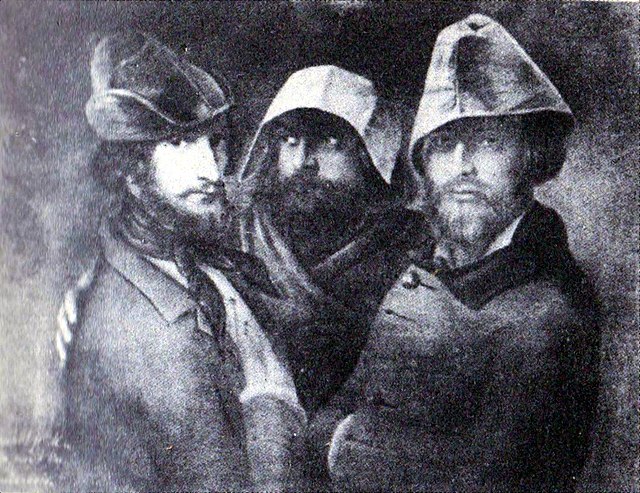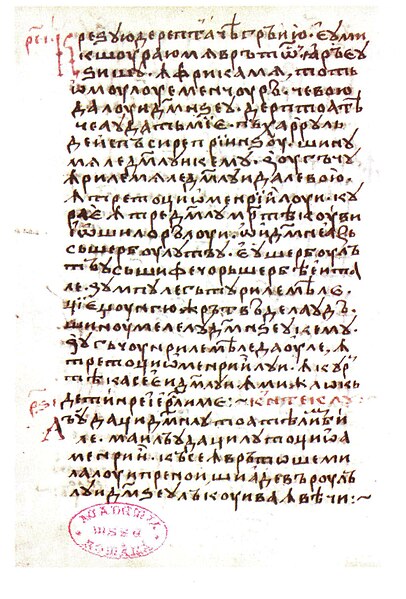Neacșu's letter, written in 1521, is the oldest surviving document available in Old Romanian that can be reliably dated. Written using Cyrillic, it was sent by Lupu Neacșu, a merchant from Câmpulung, Wallachia to Johannes Benkner, the mayor of Brassó, Kingdom of Hungary, warning him about the imminent attack of the Ottoman Empire on the city of Belgrad and its implications to regional politics.
Neacșu's letter is the oldest surviving document written in Old Romanian that can be precisely dated
Early engraving of Brașov
Boyar house in Câmpulung
Neagoe Basarab, Prince of Wallachia, pictured on the murals of the Curtea de Argeș Monastery
Romanian is the official and main language of Romania and Moldova. Romanian is part of the Eastern Romance sub-branch of Romance languages, a linguistic group that evolved from several dialects of Vulgar Latin which separated from the Western Romance languages in the course of the period from the 5th to the 8th centuries. To distinguish it within the Eastern Romance languages, in comparative linguistics it is called Daco-Romanian as opposed to its closest relatives, Aromanian, Megleno-Romanian, and Istro-Romanian. It is also spoken as a minority language by stable communities in the countries surrounding Romania, and by the large Romanian diaspora. In total, it is spoken by 25 million people as a first language.
Neacșu's letter is the oldest surviving document written in Old Romanian that can be precisely dated
Lithograph of a group portrait by Constantin Daniel Rosenthal, showing Paris-based revolutionaries during the early 1840s. From left: Rosenthal (wearing a Phrygian cap), C. A. Rosetti, anonymous Wallachian
Ion Creangă
Hurmuzaki Psalter, written around 1500







